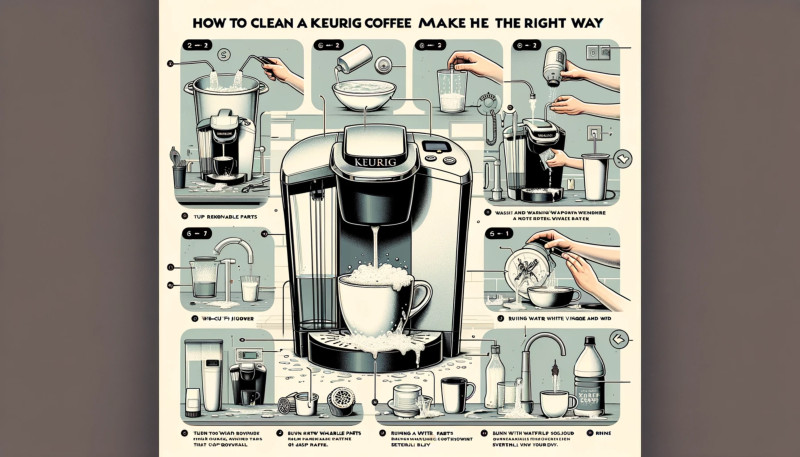When it comes to pasta, there's something for everyone. Whether you prefer a classic spaghetti dish or a unique shape that holds sauce just right, the world of pasta is as diverse as it is delicious. In this comprehensive guide, we'll explore the many different types and shapes of pasta, from popular favorites to lesser-known gems.
One of the most iconic pasta shapes is spaghetti, with its long, thin strands that twirl around a fork effortlessly. This versatile pasta pairs well with a variety of sauces, from a simple tomato and basil to a rich and creamy alfredo. But spaghetti is just the tip of the iceberg when it comes to pasta shapes.
For those looking to add a little excitement to their pasta dishes, there are endless options to choose from. From the delicate twists of fusilli to the tube-like rigatoni, each pasta shape has its own unique texture and flavor profile. Some shapes, like farfalle and penne, are perfect for capturing chunky sauces, while others, like angel hair and linguine, are best served with lighter, oil-based sauces.
In this guide, we'll take a closer look at each pasta shape, exploring their origins, cooking methods, and the best sauces to pair them with. Whether you're a pasta aficionado or just dipping your toes into the world of pasta, this guide will help you navigate the vast array of shapes and types available, ensuring that every pasta dish you create is a masterpiece.
An Overview of Pasta Types and Shapes
Pasta is a staple in many cuisines around the world and comes in a variety of shapes and sizes. Each type of pasta has its own unique characteristics and is best suited for certain dishes.
how to pick a good watermelon
One of the most popular types of pasta is spaghetti, which is long and thin. It is often served with tomato sauce and meatballs, but can also be used in dishes like carbonara or aglio e olio. Spaghetti is versatile and can be paired with a wide range of sauces and ingredients.
Another common type of pasta is penne, which is short and cylindrical with angled ends. The hollow center of penne helps it hold onto sauce, making it a popular choice for baked pasta dishes. Penne is often served with hearty meat or tomato-based sauces.
Farfalle, also known as bowtie pasta, is another popular choice. It is shaped like a bowtie or butterfly and is often used in pasta salads or dishes with creamy sauces. The unique shape of farfalle adds visual interest to any dish.
For those looking for a lighter option, angel hair pasta is a great choice. It is very thin and delicate, and cooks quickly. Angel hair pasta pairs well with light sauces, such as garlic and oil, or simple tomato sauces.
Ravioli is a type of filled pasta that is often stuffed with cheese, meat, or vegetables. It is typically served with a sauce, such as marinara or butter and sage. Ravioli can be a time-consuming dish to make from scratch, but store-bought options are also available.
These are just a few examples of the many types and shapes of pasta available. Whether you prefer long and thin noodles or short and sturdy shapes, there is a pasta out there to suit every taste and dish.
What are different shapes of pastas?
Pasta comes in a wide variety of shapes and sizes, each with its own unique characteristics and uses. Here are some of the most popular pasta shapes:
1. Spaghetti: Long, thin strands of pasta that are perfect for twirling around a fork. Spaghetti is commonly served with tomato-based sauces and meatballs.
2. Penne: Short, tube-shaped pasta with angled ends. Penne is great for holding chunky sauces and is often used in baked pasta dishes.
3. Fusilli: Corkscrew-shaped pasta that is perfect for catching and holding onto thick sauces. It works well in pasta salads and casseroles.
4. Farfalle: Bow tie-shaped pasta that is great for holding onto creamy sauces. It adds a playful touch to any pasta dish.
5. Rigatoni: Large, tube-shaped pasta with ridges on the outside. Rigatoni is ideal for hearty meat sauces and baked pasta dishes.
6. Linguine: Flat, thin strands of pasta similar to spaghetti but wider. Linguine pairs well with seafood and lighter sauces.
7. Ravioli: Square or round pasta pockets filled with various types of meat, cheese, or vegetables. Ravioli is often served with a simple sauce or in a hearty soup.
8. Lasagna: Wide, flat sheets of pasta that are layered with sauce and cheese to create a delicious baked dish. Lasagna is a classic comfort food.
9. Orzo: Small, rice-shaped pasta that is commonly used in soups and salads. It adds texture and substance to any dish.
annual vs perennial
10. Macaroni: Short, curved pasta tubes that are often used in macaroni and cheese dishes. They are also popular in pasta salads.
These are just a few examples of the many different shapes and sizes of pasta available. Each shape has its own unique texture and ability to hold onto sauces, making pasta a versatile and delicious option for any meal.
Why pasta has different shapes?
Pasta comes in a variety of shapes and sizes, and each shape is designed to serve a specific purpose. The shape of pasta plays a crucial role in determining how the sauce clings to it and how it cooks. Different shapes also enhance the overall eating experience, as they can hold onto different flavors and textures.
One of the main reasons pasta has different shapes is to pair it with specific types of sauces. For example, long, thin pastas like spaghetti or linguine are often paired with lighter, oil-based sauces or simple tomato sauces. The long strands of pasta allow the sauce to coat each strand evenly, resulting in a harmonious blend of flavors.
On the other hand, shorter, tube-shaped pastas like penne or rigatoni are ideal for thicker, chunkier sauces. The hollow center of these pastas helps to capture and hold onto the sauce, creating a burst of flavor with every bite.
Pasta shapes also affect the cooking time and texture of the dish. Thicker, tube-shaped pastas take longer to cook, allowing them to retain a firmer texture even after being cooked. Thinner, delicate pastas cook quickly and have a softer, more delicate texture.
Moreover, different shapes of pasta can be used in various types of dishes. For example, lasagna noodles are designed specifically for layering in baked pasta dishes, while small shapes like orzo or farfalle are perfect for adding to soups or salads.
To help you navigate the world of pasta shapes, here is a table with some popular shapes and their characteristics:
| Pasta Shape | Characteristics |
|---|---|
| Spaghetti | Long, thin strands that work well with light sauces. |
| Penne | Short, tube-shaped pasta with ridges, ideal for holding onto chunky sauces. |
| Rigatoni | Large, tube-shaped pasta with ridges, perfect for baked dishes. |
| Linguine | Long, flat pasta similar to spaghetti, often paired with seafood. |
| Farfalle | Bowtie-shaped pasta that adds visual appeal to any dish. |
So, the next time you choose pasta for your recipe, consider the shape and its purpose. Whether you want to pair it with a specific sauce, create a visually stunning dish, or simply enjoy different textures, the shape of pasta will play a vital role in your culinary experience.
Exploring the World of Spiral and Twisted Pastas
When it comes to pasta, there are endless possibilities in terms of shapes and sizes. One category that stands out is spiral and twisted pastas. These unique shapes not only add visual interest to a dish, but they also provide a different texture and mouthfeel.
One popular example of spiral pasta is fusilli. This corkscrew-shaped pasta is incredibly versatile and can hold up to heavy sauces, making it a favorite for pasta salads and baked dishes. Its shape also allows it to catch and hold onto chunky sauces, ensuring every bite is packed with flavor.
Another spiral pasta variety is rotini. This twisted pasta has a tighter spiral shape compared to fusilli, making it ideal for holding onto thinner sauces. Its shape also allows it to cook evenly, resulting in a consistent texture throughout the dish.
For those who prefer a thinner and more delicate spiral pasta, gemelli is a great option. This pasta is twisted and shaped like a double helix, resembling a twisted rope. Its delicate shape makes it perfect for lighter sauces or for adding to soups and stews.
massages
One less common but equally interesting twisted pasta is strozzapreti, which translates to 'priest strangler.' Legend has it that this pasta was named after its resemblance to a priest's collar, with the implication that it is so delicious that it could make a priest forget his vows. Its unique shape makes it perfect for capturing chunky sauces, ensuring maximum flavor in every bite.
Overall, spiral and twisted pastas offer a fun and unique way to enjoy your favorite pasta dishes. Whether you're looking for a pasta that can hold up to heavy sauces or one that pairs well with lighter flavors, there's a spiral or twisted pasta shape for every preference. So, next time you're in the mood for pasta, consider trying one of these exciting shapes and experience a whole new world of pasta perfection.
What are the spiral pastas?
Spiral pastas, also known as fusilli, are a type of pasta that is characterized by its distinctive spiral shape. These corkscrew-like noodles are popular in many Italian dishes and are loved for their ability to hold onto sauces and other ingredients.
Fusilli pasta can be made from either durum wheat or semolina flour, giving it a slightly different texture and flavor. It is typically made by rolling small pieces of pasta dough around a thin rod or skewer, creating the spiral shape. Once shaped, the pasta is then dried or cooked immediately.
Spiral pastas are incredibly versatile and can be used in a wide variety of dishes. They are often used in pasta salads, where their shape helps to hold the dressing and other ingredients. Fusilli can also be baked in casseroles, tossed with pesto or tomato sauces, or used in soups and stews.
One popular version of fusilli is tri-color pasta, which features spirals of pasta in three different colors: white, green, and red. This colorful pasta is often used in salads or dishes that benefit from a vibrant presentation.
Whether you're using them in a classic Italian recipe or getting creative with your own pasta creations, spiral pastas are a fun and delicious addition to any meal.
What are pasta twists?
Pasta twists, also known as fusilli, are a popular type of pasta that is characterized by its spiral shape. The name 'fusilli' is derived from the Italian word 'fuso,' which means 'spindle.'
Pasta twists are made by rolling or shaping pasta dough into long, thin strands and then twisting them into a spiral shape. This unique shape allows the pasta to hold onto sauces and other ingredients, making it a versatile option for a variety of dishes.
Pasta twists can be made from different types of flour, including semolina, durum wheat, or a combination of flours. They are typically yellow in color due to the high protein content in the flour, which gives the pasta its distinct texture and flavor.
Due to their shape, pasta twists are ideal for holding chunky sauces, as the spirals can trap small pieces of meat, vegetables, and cheese. They are also a popular choice for pasta salads, as the twists can hold onto dressings and other ingredients without becoming too soggy.
Pasta twists are commonly used in Italian cuisine, but they have also gained popularity in other parts of the world. They can be found in a variety of sizes, ranging from small twists to larger ones, depending on the intended use.
Whether you're cooking up a classic Italian dish or experimenting with new flavors, pasta twists are a versatile and flavorful option that can add a unique twist to any meal.
A Guide to Choosing the Right Pasta Shape for Different Dishes
Choosing the right pasta shape can make a significant difference in the overall taste and texture of a dish. With the wide variety of pasta shapes available, it can be overwhelming to know which shape to use for each recipe. Here is a guide to help you choose the perfect pasta shape for different dishes.
pumpkin carving stencils
Long and Thin:
Long and thin pasta shapes, such as spaghetti and linguine, are ideal for dishes with light or delicate sauces. Their slender shape allows them to absorb the sauce evenly, creating a harmonious balance of flavors. They are commonly used in classic Italian dishes like spaghetti aglio e olio and linguine with clam sauce.
Tubular:
Tubular pasta shapes, like penne and rigatoni, are perfect for hearty and chunky sauces. Their hollow centers and ridges help to hold onto the sauce, making each bite full of flavor. They work well in baked pasta dishes, such as baked ziti, as well as in pasta salads.
Shells:
Shell-shaped pasta, such as conchiglie and orecchiette, are great for capturing thick and creamy sauces. The hollow shape and ridges of the shells help to hold onto the sauce, providing a burst of flavor in every bite. They are commonly used in dishes like macaroni and cheese and pasta with vodka sauce.
Flat and Wide:
Flat and wide pasta shapes, like fettuccine and pappardelle, are perfect for rich and meaty sauces. Their broad surface area allows them to soak up the sauce, creating a delicious combination of flavors. They are commonly used in dishes like fettuccine alfredo and beef ragu.
Twists and Spirals:
Twisted and spiral-shaped pasta, such as fusilli and rotini, are versatile and can be used in a variety of dishes. Their unique shape helps to hold onto both light and heavy sauces, making them a great choice for pasta salads as well as for dishes with chunky sauces.
Specialty Shapes:
There are also various specialty pasta shapes available, such as farfalle (bowtie), cavatappi (corkscrew), and campanelle (bellflower). These shapes are not only visually appealing but also add an extra element of texture to your dishes. They work well in both simple and complex sauces, allowing you to get creative with your pasta dishes.
Remember, the shape of the pasta can greatly impact the overall eating experience, so take the time to choose the right shape for your dish. Experiment with different shapes to discover new flavor combinations and enjoy the endless possibilities of pasta perfection!
What are the basis for choosing the pasta shapes for different dishes?
Choosing the right pasta shape for a dish is not just a matter of personal preference. Each pasta shape has its own unique qualities that make it suitable for certain types of dishes. Here are some factors to consider when selecting pasta shapes for different dishes:
Sauce compatibility: The texture and shape of pasta can affect how well it holds and absorbs sauce. For example, long and thin pasta shapes like spaghetti or linguine are ideal for light, delicate sauces that can cling to the noodles. On the other hand, tube-shaped pastas like penne or rigatoni are great for thicker, chunkier sauces as they can trap and hold the sauce inside their hollow centers.
Texture and density: Different pasta shapes have varying textures and densities, which can impact the overall mouthfeel of a dish. For example, flat pasta shapes like fettuccine or lasagna have a wider surface area, allowing them to absorb more sauce and resulting in a richer, more flavorful bite. On the contrary, small pasta shapes like macaroni or shells have a denser texture and can provide a more chewy and hearty experience.
Aesthetics and presentation: The shape and size of pasta can also play a role in the visual appeal of a dish. Certain shapes, such as bowties or fusilli, can add a touch of elegance and playfulness to a plate, making them perfect for more formal or festive occasions. Additionally, using different pasta shapes in a dish can create interesting textural contrasts, enhancing the overall visual appeal of the meal.
how long can raw chicken stay in the fridge
Traditional pairings: In Italian cuisine, certain pasta shapes are traditionally paired with specific sauces or ingredients. For instance, spaghetti is often served with tomato-based sauces, while orecchiette is commonly used in dishes with broccoli rabe or sausage. Adhering to these traditional pairings can help to ensure an authentic and harmonious flavor combination.
Cooking time: The cooking time can also vary depending on the shape and size of the pasta. Thicker and larger pasta shapes may require longer cooking times, while thinner and smaller shapes cook more quickly. It's important to consider the cooking time when choosing pasta shapes to ensure that all the components of the dish are properly cooked and balanced.
By taking these factors into account, you can make informed decisions when selecting pasta shapes for different dishes, enhancing both the taste and presentation of your meals.
What pasta shape is best with sausage?
When it comes to pairing pasta with sausage, there are several shapes that work particularly well. The shape of the pasta can greatly influence the overall eating experience, so it's important to choose the right one to complement the flavors and textures of the sausage.
One popular choice is penne. The tubular shape of penne allows it to hold onto chunky pieces of sausage, ensuring that each bite is packed with flavor. The ridges on the outside of the penne also help to capture sauce, creating a delicious and satisfying dish.
Another great option is orecchiette. This small, ear-shaped pasta is the perfect vessel for capturing small bits of crumbled sausage. The concave shape of orecchiette allows it to hold onto sauce and sausage, providing a burst of flavor in every bite.
For those who prefer a longer pasta shape, spaghetti is an excellent choice. The thin strands of spaghetti pair well with sausage, allowing the flavors to meld together as you twirl the pasta around your fork. Spaghetti also works well with both chunky and crumbled sausage, making it a versatile option.
If you're looking for a pasta shape that will add some visual interest to your dish, consider fusilli. The corkscrew shape of fusilli not only looks beautiful on the plate, but it also helps to hold onto the sausage and sauce. The nooks and crannies of fusilli ensure that each bite is filled with sausage goodness.
Ultimately, the best pasta shape to pair with sausage comes down to personal preference. Whether you prefer a tubular shape like penne, a small and concave shape like orecchiette, a long and thin shape like spaghetti, or a visually interesting shape like fusilli, there is a pasta shape out there that will enhance the flavors of your sausage dish. Experiment with different shapes to find your perfect pairing and enjoy the delicious combination of pasta and sausage!
| Pasta Shape | Description |
|---|---|
| Penne | Tubular shape that holds onto chunky sausage pieces |
| Orecchiette | Small, ear-shaped pasta that captures crumbled sausage |
| Spaghetti | Thin strands that pair well with sausage |
| Fusilli | Corkscrew shape that adds visual interest and holds onto sausage |
How do you serve shaped pasta?
Serving shaped pasta is a delightful experience that allows you to get creative with your presentations. Here are some tips on how to serve shaped pasta:
- Pair with the right sauce: Different shapes of pasta pair well with different types of sauces. For example, long and thin pasta shapes like spaghetti or linguine are perfect for light and delicate sauces, while shorter and chunkier shapes like penne or rigatoni are great for hearty and thick sauces.
- Add complementary ingredients: Enhance the flavors and textures of shaped pasta by adding complementary ingredients. For example, if you are serving spiral-shaped fusilli pasta, you can add roasted vegetables, such as zucchini and bell peppers, to create a colorful and flavorful dish.
- Garnish with fresh herbs: Fresh herbs are a great way to add an extra burst of flavor and visual appeal to your shaped pasta dish. Sprinkle some chopped basil, parsley, or cilantro on top of your pasta to elevate the dish.
- Consider the serving vessel: The shape of the pasta can also influence the choice of serving vessel. For example, large shell-shaped pasta like conchiglioni can be filled with a delicious stuffing and baked in the oven, making for an impressive and filling dish.
- Experiment with different presentations: Shaped pasta offers endless possibilities for creative presentations. You can serve it in a bowl, on a plate, or even in a hollowed-out vegetable for a unique twist. Let your imagination run wild!
Remember, serving shaped pasta is not only about the taste but also about the visual appeal. So, get creative, have fun, and enjoy the pasta perfection!




